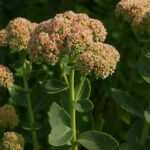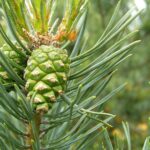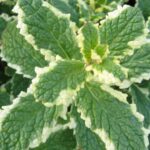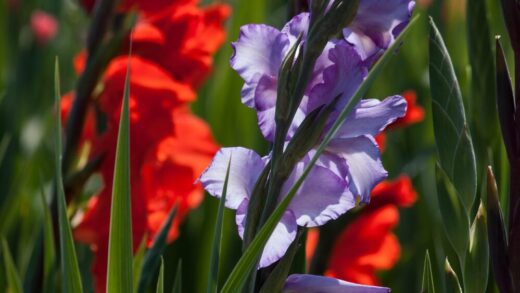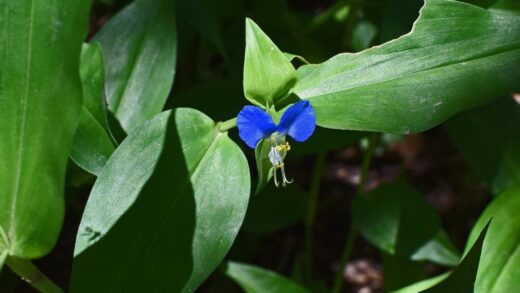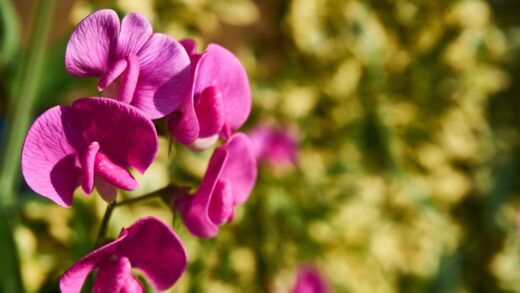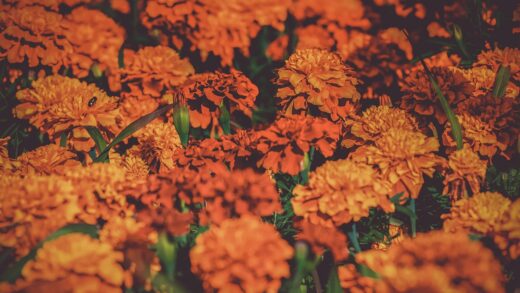To sustain its famously rapid and lush growth, Algerian ivy requires a consistent supply of essential nutrients from its soil. While it is not an exceptionally heavy feeder compared to some other fast-growing plants, a well-structured fertilization program is vital for maintaining its vibrant green foliage and overall vigor. Fertilizing replenishes the nutrients that the plant consumes over time and those that are leached from the soil with each watering. Providing the right balance of nutrients at the right time will result in a healthier, more resilient, and more visually appealing plant.
The primary nutrients that plants need are nitrogen (N), phosphorus (P), and potassium (K), often referred to as macronutrients. Nitrogen is particularly crucial for Algerian ivy as it is the key component in chlorophyll and is directly responsible for promoting the growth of dense, green leaves. Phosphorus plays a vital role in root development and energy transfer, while potassium contributes to the plant’s overall health, disease resistance, and water regulation. A good fertilization strategy will provide these three nutrients in a balanced ratio.
The need for fertilizer is most pronounced during the plant’s active growing season, which spans the spring and summer months. During this period, the combination of longer daylight hours and warmer temperatures stimulates vigorous new growth, increasing the plant’s demand for nutrients. Conversely, during the fall and winter, the plant enters a dormant phase where its growth slows significantly, and its nutritional requirements diminish. Tailoring your feeding schedule to this natural cycle is key to effective fertilization.
This article will serve as a comprehensive guide to understanding and meeting the nutrient requirements of your Algerian ivy. We will delve into the types of fertilizers best suited for this plant, establish an optimal feeding schedule, and discuss how to identify and address signs of both nutrient deficiency and excess. By following these professional recommendations, you can ensure your ivy receives the nourishment it needs to thrive and maintain its status as a stunning focal point in your home or garden.
Understanding fertilizer basics
Fertilizers are labeled with three numbers, known as the N-P-K ratio, which represent the percentage by weight of nitrogen (N), phosphorus (P), and potassium (K) they contain. For a foliage plant like Algerian ivy, a balanced fertilizer where the three numbers are equal (e.g., 10-10-10 or 20-20-20) is an excellent general-purpose choice. This ensures the plant receives an adequate supply of all three macronutrients. Some growers prefer a formula slightly higher in nitrogen (e.g., 10-6-4) to specifically encourage more robust leaf production.
Fertilizers are available in several different forms, including liquid, granular, and slow-release stakes or pellets. For potted Algerian ivy, a liquid or water-soluble fertilizer is often the most convenient and effective option. These are mixed with water and applied during a regular watering session, providing a quick and easily absorbed source of nutrients directly to the roots. This method also gives you precise control over the concentration and frequency of application.
Granular fertilizers are more commonly used for outdoor, in-ground plantings. They are scattered over the soil surface and then watered in, releasing their nutrients more slowly over time as they break down. Slow-release fertilizers, as the name suggests, are formulated to release a small, steady supply of nutrients over an extended period, often several months. While convenient, they offer less control over the feeding process, which can be a disadvantage if you need to adjust the nutrient supply in response to the plant’s condition.
It is also beneficial to consider the role of micronutrients, which are needed in much smaller quantities but are still essential for plant health. These include elements like iron, magnesium, manganese, and zinc. Most high-quality, complete fertilizers will contain a range of these micronutrients. Using a fertilizer that provides these trace elements can help prevent specific deficiencies that might lead to issues like leaf chlorosis (yellowing of leaf tissue between the veins).
Creating a feeding schedule
The most effective fertilization strategy for Algerian ivy is to feed it regularly but lightly during its active growing season. A good routine is to apply a balanced, water-soluble fertilizer once every four weeks, starting in the early spring when new growth appears and continuing through the end of summer. This consistent supply of nutrients will fuel the development of new stems and leaves, helping the plant to look its best throughout the warmer months.
It is critically important to dilute the fertilizer correctly to prevent root burn. A common and safe practice is to mix the fertilizer at half the strength recommended on the product’s packaging. For example, if the instructions say to mix one tablespoon of fertilizer per gallon of water, you should use only half a tablespoon per gallon. It is always better to under-fertilize than to over-fertilize, as an excess of fertilizer salts can accumulate in the soil and cause significant damage to the plant’s root system.
You must stop fertilizing your Algerian ivy in the autumn and winter. As daylight hours shorten and temperatures drop, the plant’s growth slows dramatically, and it enters a state of rest. It does not need the extra nutrients during this dormant period, and continuing to feed it can lead to a harmful buildup of mineral salts in the soil. Resume your feeding schedule in the spring, as the plant begins to show signs of waking up and producing new growth.
Always apply fertilizer to soil that is already moist. Never fertilize a plant when the soil is completely dry. Watering the plant thoroughly a day or so before you plan to fertilize ensures that the roots are hydrated and better able to absorb the nutrients without being damaged by the concentrated fertilizer salts. This simple step can make a significant difference in the safety and effectiveness of your fertilization routine.
Organic vs. synthetic fertilizers
When choosing a fertilizer, you have the option between organic and synthetic formulas, each with its own set of advantages and disadvantages. Synthetic fertilizers are manufactured from chemical compounds and are designed to provide a precise and readily available source of nutrients. They are fast-acting, and their exact nutrient content is clearly stated, which allows for very controlled feeding. However, they are more prone to causing root burn if over-applied and can contribute to a buildup of salts in the soil over time.
Organic fertilizers are derived from natural sources such as compost, worm castings, bone meal, or fish emulsion. They release their nutrients more slowly as they are broken down by microorganisms in the soil. This slow-release nature makes them less likely to burn roots and also helps to improve the overall soil structure and health over the long term. While their nutrient content can be less precise than synthetic options, they provide a more holistic approach to plant nutrition.
For Algerian ivy, both types of fertilizer can be effective. Many gardeners achieve excellent results with a balanced synthetic liquid fertilizer due to its ease of use and predictable results. If you prefer an organic approach, options like a diluted fish emulsion or a liquid kelp fertilizer can be applied on the same monthly schedule during the growing season. You can also improve the soil’s nutrient content by top-dressing potted plants with a thin layer of compost once or twice a year.
Ultimately, the choice between organic and synthetic fertilizers often comes down to personal preference and gardening philosophy. The most important factor for the health of your Algerian ivy is not the type of fertilizer but the consistency and appropriateness of its application. Whichever you choose, remember the golden rules: feed only during the growing season, dilute to half-strength, and apply to moist soil.
Signs of nutrient imbalance
Observing your Algerian ivy closely can help you identify potential nutrient imbalances before they become severe. A nutrient deficiency will often manifest as a change in the color or vitality of the leaves. One of the most common signs is general chlorosis, where the leaves, particularly the older ones at the base of the plant, turn a pale green or yellow. This is often an indication of a nitrogen deficiency, which can be corrected by applying a balanced fertilizer.
If you notice that the yellowing occurs specifically between the green veins of the younger leaves, this may point to a micronutrient deficiency, such as a lack of iron or magnesium. Stunted growth, where the plant produces very few new leaves and the existing ones are small, is another general sign that the plant is not receiving adequate nutrition. A regular feeding program during the growing season is the best way to prevent these deficiencies from occurring in the first place.
On the other hand, it is also possible to give your plant too much fertilizer, which can be even more damaging than a deficiency. The primary symptom of over-fertilization is fertilizer burn, which appears as brown, crispy leaf tips and margins. You may also see a white, crusty residue forming on the surface of the soil or around the rim of the pot, which is an accumulation of excess fertilizer salts. In severe cases, the plant may wilt and the leaves may drop.
If you suspect you have over-fertilized your Algerian ivy, you should act quickly to remedy the situation. The best course of action is to flush the soil with water. Take the pot to a sink or an outdoor area and slowly pour a large volume of lukewarm water through the soil, allowing it to drain freely. This will help to leach the excess fertilizer salts out of the pot. After flushing, allow the soil to dry out partially before watering again, and refrain from fertilizing for at least a month or two.
Fertilizing outdoor ivy
The approach to fertilizing Algerian ivy planted in the ground as a ground cover or on a trellis is slightly different from that for potted plants. Garden soil naturally contains a greater reserve of nutrients and microorganisms than potting mix, so outdoor ivy generally requires less frequent fertilization. However, in poor or sandy soils, an annual application of fertilizer can be very beneficial for promoting dense, healthy growth.
The best time to fertilize outdoor Algerian ivy is in the early spring, just as new growth begins to emerge. A balanced, granular slow-release fertilizer is an excellent choice for this purpose. Simply scatter the granules evenly over the soil surface around the plants, following the application rates provided on the product packaging. Gently rake the granules into the top inch of soil and then water the area thoroughly to help activate the fertilizer and move the nutrients down into the root zone.
Alternatively, you can enrich the soil organically by applying a one to two-inch layer of well-rotted compost or other organic matter over the planting area each spring. This not only provides a slow and steady supply of nutrients but also improves the soil’s structure, moisture retention, and overall health. As the compost breaks down, it will nourish the ivy throughout the growing season. This is often all the fertilization that a healthy, established patch of outdoor ivy will need for the entire year.
As with indoor plants, avoid fertilizing outdoor ivy in the late summer or fall. Applying fertilizer, especially one high in nitrogen, late in the season can encourage a flush of tender new growth that will not have time to harden off before the first frost. This new growth is highly susceptible to winter damage, which can set the plant back in the following spring. Timing your application for the early part of the growing season ensures the plant can make the most of the nutrients when it needs them.



